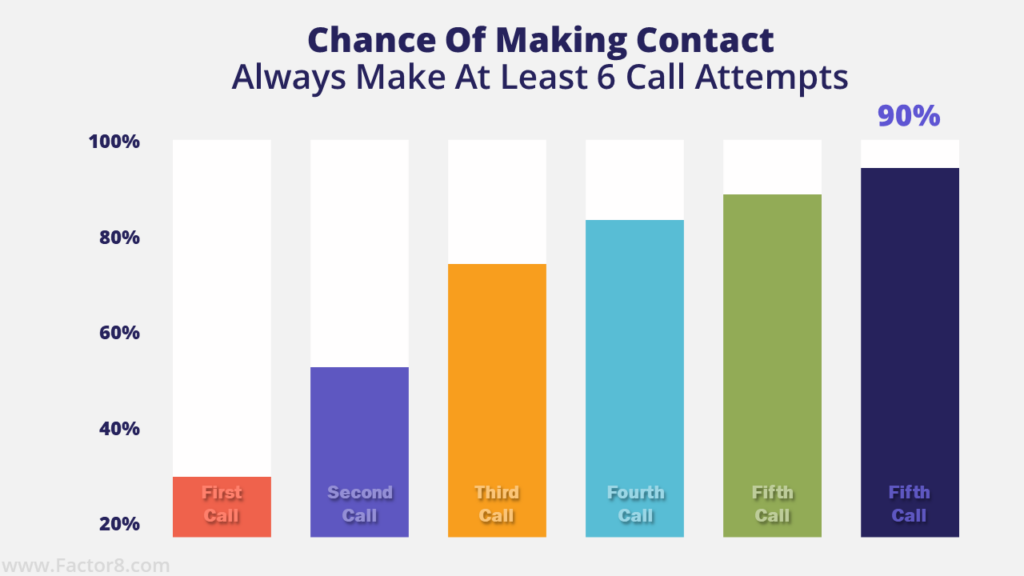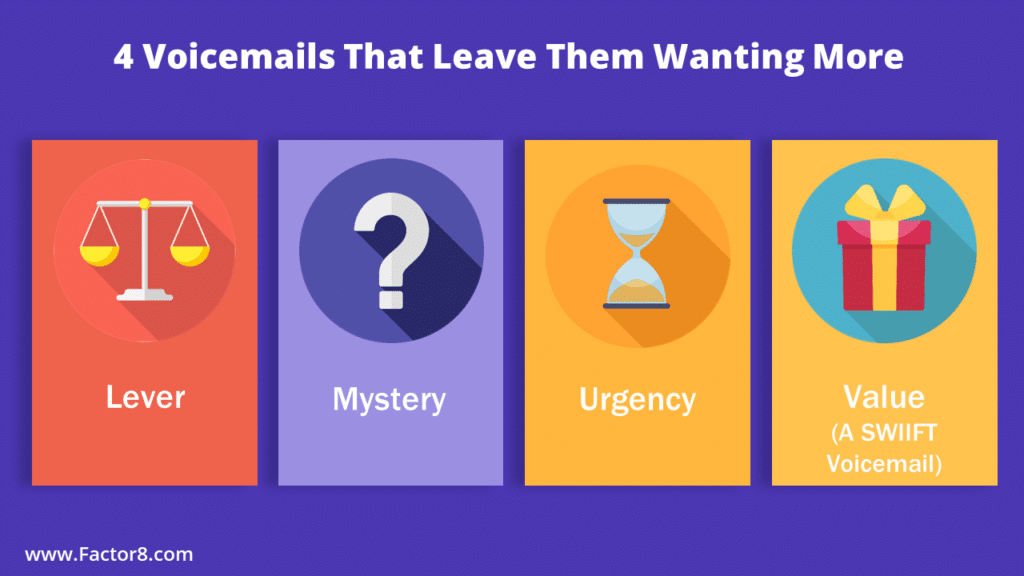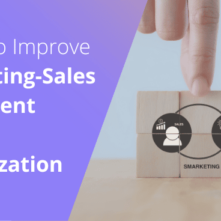Power Prospecting: Spend Less Time, Get Better Results [“Sales Shot” Workshop]
Power Prospecting: Spend Less Time, Get Better Results
[“Sales Shot” Workshop]
[“Sales Shot” Workshop]

I heard from a CRO friend recently that she knows the economy is causing low morale for her team. They see friends being laid off and it’s harder to make commission. Sound familiar?
Most of us (guilty!) start to double down on lead generation efforts, curbing spending, and training how to close in today’s economy (seriously, email us if we can help with this). I don’t worry about their commission because I’m getting scrappy to ensure I can afford base salaries. Literally never thought once about how my team might not make the same money.
READ: Leading Sales Teams Through A Recession
Not this CRO. She immediately earmarked funds (read: stole from another budget line item) to supplement commissions and incentives so she could retain her top talent. She didn’t assume loyalty, because she knows they are awesome and they can go elsewhere. Also, she knows what it will cost her this year and the next 3 years to hire, onboard, and upskill these tenured sellers’ replacements.
Talk about going left when the rest of the team goes right! Have you looked at how reduced sales are affecting commission payments on your team? Have you talked to the team about how they’re faring and how they’re feeling? Have you explained what you can and can’t do and dug deep to figure out how to help them feel important and loyal?
I know I personally won’t have extra budget to do this, but as I type it I “hear myself” saying “extra budget.” Wrong attitude.
READ: Top Pipeline-Building and Recession Selling Tips
What can I live without for the next 9 months so my sales don’t get WORSE? What can I live without for the next 12 months so I can invest and keep the people on the front lines right now? Can I find money to supplement bonuses? Can I find low-cost ways to show appreciation?
It’s time to get busy.

Nobody wants to use the “R” word, but whatever you call it, selling is tough right now. I’ve had the good fortune of speaking with dozens of leaders and managers about what they’re doing right now with their teams to protect their bases and keep building pipeline in case a recession does officially happen.
READ: Top Pipeline-Building and Recession Selling Tips
Here’s an idea I love that I hope you will steal when leading sales teams through a recession:
Turn down lead qualification criteria immediately.
As deals slow down, you’ll need more in the funnel to close the gap. If you’re using a standard BANT or MEDICC qualification criteria, work with the team to decide what is worth taking anyway. If your sales team isn’t busy creating proposals and demonstrating your solution, the simple answer is to get more leads. They could literally be sitting in the “reject” pile of your BDR/SDR or marketing team right now!
What should you accept? I’d start with budget.
Many buyers aren’t spending as freely right now, so if your lead qualification criteria require a ready budget, you’re rejecting most buyers.
I get it, you need leads ready and able to buy to close more deals, but if they’re not as available right now, are you willing to build future pipeline for when times change?
Can you and your team work harder to convince buyers you’re worth assigning a budget?
READ: Changing Sales Incentives During A Recession
Along these same lines, are you willing to build future pipeline for opportunities with longer timelines?
If we’ve moved on the B (budget) and T (timeline), what about Authority and Need? Truth is, now more than ever you need to show this is something prospects need over want. So check the value props being touted by your lead generation team. Can you switch something that feels like a “nice to have” to something that seems more like a “Can’t live without it, especially in today’s economy?”
For example, I sell training. People often come to us because they’re growing (nope, many in RIF mode now). Others find us because they know they need better onboarding and upskilling to attract and retain talent (nice to have, less important if not hiring).
READ: Why You Need Special Recession Payment Terms
How about this one?
During today’s economic times, the sellers are separated from the order takers. You can’t afford NOT to make sure your team have the very sharpest skills to close more deals. Protect your revenue by teaching your team how to push deals through when there’s economic uncertainty. (BTW, click here to email us and learn more about our training! 😉)
Finally, let’s talk about Authority or Champion. I think you’ve got to have it. Every deal in tough economies will be approved by your economic decision maker (e.g. CFO), and nothing is getting there without a champion explaining the urgent need for it right now.
Boom! BANT just became NC (Need and Champion).
Next step: go sit with the teams to help draft the right questions and gates for this. Just because you know what a good “need” looks like, doesn’t mean the person training your BDR team or writing the marketing copy can translate what you’re looking for into criteria and sales questions/marketing form fills.
Good luck out there!
[Cheat Sheet]

There’s no ifs, ands, or buts about it – virtual selling is here to stay, folks. That’s why the transition from field to inside sales is becoming more prevalent.
If you’ve spent years perfecting the art of in-person selling and are struggling (or resisting) the shift to virtual, it’s time to get on track and embrace it.
I get it – virtual selling is a whole different ball game where reaching contacts is harder, your sales cycle is longer, talk tracks are shorter, and a whole slew of other things you’re not used to.
That’s why I took 30 minutes on our recent Sales Shot to break down key virtual and hybrid work practices that will help you feel like a superstar again.
Whether you’ve been at it for a while or recently transitioned, these are tips you can start implementing RIGHT NOW to help you fill those holes in your pipeline.
DOWNLOAD: How to Sell to the CFO to Keep Deals Moving
Do you like baseball? (Even if you don’t, stick with me for a minute.)
Home base is closing the deal and having a happy client – but you can’t get to home base if you aren’t even on first! First base is getting someone on the phone.
Chances are, they’re not going to pick up on the first try. In fact, less than 20% will connect on that initial call. Even if it takes 12 attempts to connect – you keep calling!

Research shows that 30% of leads are never even contacted at all. That’s a ton of missed opportunity. Especially when you consider that 82% of buyers admit they bought something after a series of cold calls.
So, moral of the story: Pick. Up. The. Phone.
If you’re making all these calls, you’d absolutely better be leaving a voicemail – a GREAT voicemail. In fact, make voicemails your new BFF!
Voicemails have a few different goals. The most obvious one is getting a callback. Realistically, most of them are probably never going to get returned. But here’s what you CAN do: create a positive impression of yourself and your company, and guilt them into either picking up the phone or eventually calling back. So, get creative and make it fun!
The 4 most effective types of voicemails are:

Whatever you do, ALWAYS leave a voicemail. No voicemail = no touch. It’s like buying a billboard and leaving it blank. Yikes!
Quick Tip: Send an email right after you leave a voicemail. Your likelihood of getting a response is MUCH higher when you mix voicemail + email.
A year ago, your quota probably looked a whole lot different than today. So, take your goals and break them up into smaller, more achievable pieces!
The average successful call is now just 3.5 minutes!
Structure your calls around these 3 key questions:
Do NOT go through an alphabetical list of prospects and pick away at it until you get to Z.
Take the time to actually qualify your leads and call based on that score! You’ll have A,B, C, and D leads (and you can probably skip the D leads). Start with your A leads and work your way down the list until you finish the C leads.
As a general rule, here’s how often to call each lead:
If you got someone talking on the phone after a cold call, the hardest part is over. So make sure you’re taking advantage of it by ALWAYS scheduling the next step WHILE you’re on the call.
Can you schedule the follow-up call now? How about sending a calendar invite with the next meeting’s info? Have you given your cell number to get theirs?
Give yourself permission to call back by urging them to look at their calendar and confirming when you’ll be connecting again.
WATCH: Transitioning from Field to Virtual Selling
Keep in mind, the more you try out these tips, the easier it gets and the more success you’ll see. So get on the virtual train with the rest of us and start building that pipeline. You got this!
[“Sales Shot” Workshop]

Layoffs, Recessions, and RIFs (Ooooooh, my)
It’s a crap situation folks, no way around that. But if you’re in a revenue role and you smell it coming, or just got your notice, here are our top 5 tips to help you recover from a sales layoff:
I’m also a believer that putting it out there in the universe is necessary step #1 in bringing what we want to us!
Get yours in order! What percent did you increase market share? Was there a spike in metrics under your leadership? How many quarters did you exceed quota? How about your team? Did you win any records? Awards? Listen, if the very best thing you did was reach quota consistently realize that is a WIN! If you’re still there, start running reports to shore up your data.
What else did you do? Customer satisfaction? Product development? Process documentation? Testimonial acquisition? New customer types? Lead with numbers and close with some voice of the customer. They’ll be lining up to talk to you!
In short, approach this well-deserved break like the freaking diamond you are. There’s an international shortage of professional sellers – especially virtual sellers. Find an industry and company that’s thriving and package yourself as a FIND! I’m confident that YOU are something you can sell.
Good luck out there! If we can help you brush up on your selling skills at Factor 8 with free virtual sales BDR, AE, or Account Management training, please email us at info@factor8.com and mention this blog.
If you’re a woman in revenue leadership, please apply to join the #GirlsClub Sales Leadership Certification Program as a Protégé (new or aspiring manager) or Mentor (5+ years of leadership experience). Our amazing sponsors will help foot the bill.

When the economy gets shaky and buyers get nervous, we see meetings fall off calendars, and deals go dark. It can feel scary for sure – especially when we see our new hire classmates cut from the team.
Here are some tips to keep on keeping on selling during a recession.
That includes getting cell phone numbers. Start with everything currently booked. Call and email them today to confirm and leave your cell number. Ask them to text and leave theirs. It’s OK to be honest. Try something like:
“Hey Ted, LB here. Looking forward to Tuesday and just want to confirm we’re still on. I’ve had a few folks literally disappear in the past month with this uncertain economy. VERY glad that’s not you. Listen, I’m going to leave my cell. Will you please be kind enough to return my call or pop over a text to confirm Tuesday at 11 Central? Thanks! It’s xxx-xxx-xxxx. One more time: xxx-xxx-xxxx. Talk soon.”
This move helps you keep the connects you have, shows concern, and gets you cell numbers. Winner! Do it for meetings you are setting up this week as well.
“OK, I’ll hit you back on Tuesday at 11. I’ll be ready to cover A, B, and especially C. Will you bring XYZ? I’m sending over a calendar invite to hold our place. It has a bridge, but I want you to have my mobile as well. My number is xxx-xxx-xxxx, can I grab yours?”
You won’t get it every time, but I’ll estimate 9 out of 10. Boom. No more going dark.
I stole this great tip from Doug Landis in our recent webinar, How To Build Pipeline And Keep Selling During A Recession. Nobody buys vitamins during a recession, they buy Advil. Truth is, my service of sales and leadership skills is definitely vitamins – the stuff that’s good for you we are supposed to take and tell our doctors we do…but isn’t usually prioritized. Yes, even though taking your vitamins helps you AVOID taking the hard stuff down the line, human nature is human nature. So if you’re normally plugging things like employee morale and retention, it’s time to restate.
Advil helps us avoid pain. Pain we’re already in. What does your product solve that fixes a pain? Uncertain times lead to fear buying (one word ya’ll: hand sanitizer. Wait, here’s another: toilet paper.) These memories are fresh. People stop buying anything that isn’t essential, doesn’t pull them out of pain, or won’t protect them from horrible recession-related risks. Find the Advil in your solution and lead with that.
(Watch LB’s tips on changing your value prop during a recession below)
What industries aren’t suffering right now? Automotive is strong (have you SEEN prices!?), healthcare and insurance are always winners, banks are flush, who else? Buy a new list or pull the bottom of yours out and go long.
Can you highlight a cancellation clause? Payment terms? Low-cost trial? Nobody wants to be the guy who spent too much and trapped the company in a big spend if this whole situation gets worse. Help them see this purchase will deliver them from pain and not get them in trouble.
Now is the time to build deeper relationships. When someone says they can’t buy now, don’t hang up the phone! Get to know them, their company, their situation, their partner! Sometimes the best you can do is build pipeline, so build the strongest damn pipe your manager has ever seen. That means rock-solid projections of how many, how much, when they can buy, and every step it will take in the purchasing process. Get it one step short of a signature and be best friends with everyone along the way so they can’t wait to sign.
We’re talking about asking more questions, building more rapport, showing more empathy, finding more contacts, going wide in the account. You should know every past competitor considered and why they failed, exactly how your solution will be used, the three purchases in line in front of you, the one guy who’s most doubtful. Getting the picture? About triple the info you normally have when you call it.
Remember…A recession or economic downturn is inevitable and also temporary. Do your future self a favor by staying positive and keeping momentum going so you’re ready to hit the ground running when things get back to “normal”!

According to data from LinkedIn, 90 percent of sales and marketing professionals believe their strategy, processes, content, and culture are not aligned.
From our experience, that number isn’t hard to believe at all.
And it’s really frustrating to see because organizations that don’t align marketing and sales miss out on so much potential:
So how do you get your marketing & sales teams in sync? Here are some tactics you can start implementing today to improve marketing-sales alignment.
The best way to think about marketing-sales alignment is this:
Ultimately, Marketing and Sales aren’t two separate teams. They’re one team: the Revenue team.
At the end of the day, Marketing and Sales have the same goal. They simply use different tools and tactics to get there.
Marketing-sales alignment is just an intentional, strategic agreement to work with – not against – each other. There are a number of ways this can take shape, depending on the organization:
Because every organization is different, how to prioritize and apply these tactics will depend on your specific needs and your team structure. However, no matter which approach you take, the key is to focus on building cohesion and unity among your revenue generators.
We all know that Marketing and Sales don’t always get along. They have their territories and AORs and may not like it when the other steps on their toes.
However, this tension is detrimental to an organization’s ability to grow. Here are some stats to prove it:
Why does marketing-sales alignment lead to these results? Some of the key benefits of marketing-sales alignment include the following:
Big vs. small picture
Generally, marketers look at large-scale audiences, and salespeople focus on individual prospects. Both are important for effective revenue generation. If you lose sight of the individual prospect, you’re going to start to seem out of touch. But if you focus only on a handful of people, you won’t be able to scale.
Data vs. anecdote
What do your customers want? This is a key question that every organization wants to answer, and marketers and salespeople generally use different approaches to arrive at one. Marketers rely on data, which reveals big-picture trends. Salespeople rely on individual anecdotes, which can reveal key information that may get lost in the data.
Focus your efforts
When you have Marketing and Sales working in tandem, each of them can focus their efforts on the same industries, verticals, and segments. For example, Marketing can create content that they deploy through paid ads, social media, and email. Sales can then see who engages with that content and follow up with personalized messages.
If they convert, Marketing gets attributed revenue. Sales gets warm leads. It’s a win-win for everyone!
Improve the customer experience
Marketing-sales alignment also results in a seamless experience for prospects and customers as they move from one stage of the buyer’s journey to another. You don’t want them to hear one message from marketing materials and another from a salesperson—that is jarring and reduces their trust in your organization.
So how do you know whether your marketing and sales practices are aligned (or misaligned)? What are some of the metrics you should be tracking?
Here are a few I’d recommend:
Another thing to keep in mind: if you’re having vastly disproportionate success or failure in one team versus the other, then that’s a big misalignment red flag. If one team is dropping the ball, that’s the real opportunity you’re missing out on.
Now let’s get into the nitty-gritty: how do you improve marketing-sales alignment within your own organization? Here are six steps that will get you on the right track.
1. Get buy-in at all levels
Before everyone gets aligned, you need to get buy-in—from C-suite to marketing and sales leadership, to the salespeople on the ground.
The best way to do this is to communicate the value: how will marketing-sales alignment help them be more successful? You can reference the info shared above to help you make that case.
2. Maintain clear, open communication
Alignment doesn’t happen by accident. You need to clearly and proactively maintain open lines of communication so everyone stays on the same page:
This approach also allows you to quickly identify gaps and get ahead of any problems.
3. Share and translate respective goals
One of the reasons marketing and sales teams so often misalign is that they have separate goals and success metrics. The best way to combat this is to create shared goals.
For instance, hold Marketing accountable for the revenue they drive (not just the value of the opportunities). They’ll quickly take an interest in sales enablement.
For Sales, hold them accountable for what they do with Marketing leads. Even if they’re bad leads, they should follow up with them and then communicate the issues so that they can be fixed.
4. Establish service-level agreements (SLAs)
Now for this next tip, keep in mind that different organizations have different levels of formality. Whether a formal, contract-style service-level agreement (SLA) is right for you depends a lot on your culture, team size, and the current state of relations between your marketing and sales teams.
However, one thing is the same for all organizations: set clear expectations for both teams.
An SLA should define the common goals for Marketing and Sales and include key deliverables:
SLAs can help establish mutual accountability and start to build trust with everyone.
5. Coordinate content marketing with sales
This is one that’s often overlooked but very important. Marketers often generate content without asking the key question: will this provide value to our target buyers? Or, is this something a buyer is even interested in?
That’s where salespeople can help. After all, they’re on the front lines with customers every day. Often, they can provide a gut check on content, provide potential topics, and, most importantly, share real-life questions prospects ask during the buying process—which can lead to some great topic ideas.
Additionally, salespeople with an active presence on social media can help promote key content and support your marketing efforts.
6. Invest in technology that supports alignment
Finally, it’s important to have the tools and technology in place to enable marketing-sales alignment. This is even more critical in a post-COVID, remote environment.
Some examples of these technologies include:
The more technology you have to align your team and the more ingrained that technology is in their workflows, the more aligned everyone will become.
At the end of the day, Marketing and Sales aren’t separate teams. They’re one team: the revenue team. Get them aligned so you can manage and move forward together!

Have you ever written a bland sales email that made you think: If I was the prospect, I’d delete this in a heartbeat?
Don’t lie. Because we’ve all done that.
Let’s face it: writing a sales email is HARD. In less than 100 words, you’ve got to do multiple things:
And worse: if you come across as trying too hard or being too sales-y, then you’ll end up in the trash.
Even if your organization has a solid sales process and your reps are great on the phone, sending an email to support your sales calls is an essential part of prospecting. So let’s walk through some tips to write better sales emails—and some templates that can get you started.
READ: Sales Outreach: How to Incorporate Emails and Phone Calls Into Your Sequences
Before we dive into some stats, tactics, and strategies, let’s get one thing straight: sales outreach is simply a means to an end.
The end: getting the prospect to either hop on a call, or tell you they’re not interested.
If you aren’t achieving one of those two things, then you’re likely experiencing one of the following problems:
Here’s the thing: 72% of business professionals prefer email communication for back-and-forth interactions. So rather than write off email as a dead art form, let’s see about making those emails better and more effective.
And this is where we get into an age-old debate: who should write sales emails? Sales or Marketing?
A lot of organizations prefer the marketing team to take care of this. But the main reason for this is that a lot of salespeople are bad at writing emails. Either because they aren’t gifted writers, or because they get so focused on a singular goal (e.g. pitching) that they come off as too aggressive or tunnel-visioned.
But although marketers typically have more experience writing emails, that doesn’t mean they can necessarily write one-to-one communications. Here are some of the reasons:
So while salespeople should write their own emails, it’s a good idea to seek out advice from Marketing on how to do it well. Plus, this is a great way to generate more marketing-sales alignment.
Here are some ways your marketing team can help salespeople write better email outreach.
A key part of any marketing strategy is creating buyer personas to better understand your target customer. These resources can help salespeople better understand how prospects think and tailor their message accordingly.
Marketing campaigns create data. Sometimes this data shows that a campaign has worked well. Sometimes it shows that it’s flopped. Either way, this can be helpful in understanding which creative, copy, and other elements have been effective at drawing in your target buyer.
Remember how I said earlier that a sales email should clearly state your value prop?
Guess who’s spent months, perhaps years, researching and refining the best way to communicate that value? That’s right: the marketing team.
If something in your email isn’t hitting the right pain points, your marketing team can help you figure it out. Plus, if you’re wondering “what do I even say?” in your emails, there’s no need to reinvent the wheel.
Like it or not, your marketing team has (or should have) a ton of experience marketing key communications and messages. They know the pitfalls of batch sending a thousand emails a day (don’t do this) and how to avoid getting your email account suspended.
Don’t hesitate to rely on them for key insights and to help get started, especially if automation tools are new to you or your team.
Here’s the thing: salespeople can be aggressive. All we care about is selling product and getting people on calls, which is great.
But that often means that we have tunnel vision: we go into sales emails just focused on talking up the product and pushing people to get on a call. For prospects who’ve just heard about the company for the first time, this can be a bit concerning.
Having the marketing team (or anyone, really) look over the email can help you avoid some common pitfalls:
Remember to keep your messaging SWIIFT℠. New to SWIIFT℠? Check it out here.
Getting an outside perspective can help you break out of the tunnel vision and craft a message that’s more likely to convert.
So although Marketing can help you improve your sales emails, you still have to sit down and write the darn things yourself. Here are 12 actionable tips that you can implement fairly easily, and will take your emails to the next level.
1. Target the Right Leads
This is the most important, but most people skip over it. Before you sit down to write an email, know exactly who you’re targeting, and make sure they’re actually a good fit. Otherwise, your stellar emails will fall on deaf ears.
2. Don’t Just “Set It and Forget It”
Automation enables salespeople to do outreach at scale. However, that doesn’t mean you should “set it and forget it.” Make sure you’re constantly reviewing your data, and making adjustments based on prospect responses (or lack thereof).
3. Keep Your Sales Emails Short and Sweet
Great sales emails are shorter than you probably think. Stick to 100 words or less (125 max). That seems daunting, but people aren’t going to read much more than that. So you may as well pack all your key info into that space!
4. Personalize Your Emails
Don’t just copy and paste and change the first name. Research the buyer and try to understand their situation and how you can help them do their job better. There’s no turn-off like a lazy salesperson!
5. Make Your Value Prop Clear
Always picture your prospect asking the question: why shouldn’t I delete this email? Because, let’s face it, that’s the default setting. Make the value you offer them crystal clear. Better yet, write in a way that makes it irresistible.
WATCH: Fast And Easy Ways To Speak Value With Your Prospects
6. Reference Your Competitors
This may seem counterintuitive, but remember that buyers today are more informed than ever. They know who your competitors are. So you may as well own the conversation and clearly state why you’re better than them.
7. Write a Catchy—but Not Gimmicky—-Subject Line
Your subject line is make or break. Including things like questions, curiosity-invoking statements, value props, and more. Of course, keep it short—60 characters or less. But avoid the gimmicks (e.g. “alert,” first name tags, etc.). Buyers today see right through those.
8. Craft an Irresistible Hook
The first five words determine whether the prospect reads your email. Are you hooking them and enticing them to keep reading? If not, write it again.
9. Use Video in a Smart Way
Emails that use video get a 96% higher CTR than those that don’t. Add in a personalized video to engage the prospect, build credibility, and even show off some of your personality.
WATCH: 7 Phone & Video Prospecting Tips for Sales Reps to Crush It
10. Close With a Question
The goal of an email is to keep the conversation going. So make sure your email is open-ended. Closing with a question is a great way to do this.
11. Include Important Links in Your Email Signature
Rather than load the body of your email with links to press articles, webinar recordings, case studies, social media, etc., use your email signature. That way, if the prospect wants to learn more, they’re in a non-intrusive place.
12. Make Incremental Improvements Based on Data
Without data, you really don’t know what’s working and what isn’t. Look at which subject lines, hooks, CTAs, etc. are getting the best responses. Then optimize all your emails to match.
Writing effective sales emails isn’t a skill that reps develop overnight. It requires continual practice, and perhaps additional training and coaching. Keep at it, and remember – it’s all part of the process.